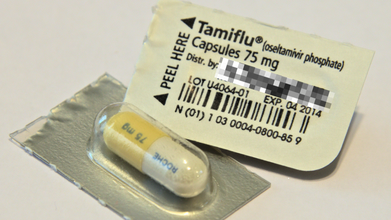- Health Conditions A-Z
- Health & Wellness
- Nutrition
- Fitness
- Health News
- Ayurveda
- Videos
- Medicine A-Z
- Parenting
What Is Type 3 Diabetes? Insulin Resistance In The Brain That Could Trigger Alzheimer’s

What Is Type 3 Diabetes? Insulin Resistance In The Brain That Could Trigger Alzheimer’s
Most people are aware of type 1 and type 2 diabetes, but did you know there is a type 3 diabetes as well! It is a more obscure term. Although it is not an accepted medical diagnosis, type 3 diabetes has been discussed in the literature as a possible relationship between insulin resistance in the brain and Alzheimer's disease. This link has been described to help explain how metabolic disorders impact brain health, causing cognitive decline and dementia.
What is Type 3 Diabetes?
Type 3 diabetes is more of a misnomer because it should not be confused with type 3c diabetes, which relates to pancreatic dysfunction. The term "type 3 diabetes," on the other hand, has been loosely used by some scientists to analogously propose that Alzheimer's disease is strongly implicated with insulin resistance in the brain.
This concept was conceptualized by Dr. Suzanne de la Monte and Dr. Jack Wands of Brown University in the year 2008. This hypothesis postulated that Alzheimer's disease may be called type 3 diabetes for it bears many similarities with glucose metabolism disorder type 2 diabetes. Their concept arises from the basic principle that insulin is fundamental to blood sugar regulation, but it is also the case with the brain. When brain cells become insulin-resistant, they lose access to glucose, impairing their function.
Research published in the Journal of Diabetes Science and Technology supports this hypothesis by indicating that insulin resistance can be a significant contributor to the occurrence of dementia, also referred to as Alzheimer's. The symptoms of memory loss and diminished reasoning are associated with impaired glucose metabolism in the body, especially in the cerebral tissue.
Symptoms of Type 3 Diabetes
Although type 3 diabetes is not a "medical term," its symptoms correlate well with Alzheimer's diseases that are known to reduce the ability to think in an efficient manner and bring down brain health. These signs are:
- Loss of memory, especially short-term.
- Poor judgment and judgment ability
- Failure in recognizing people or places familiar once.
- Failure in the process of reading, writing or processing numbers
- Anxiety, agitation, or mood changes.
- Disorganized thoughts or confusion
- Lack of impulse control
As the disease advances, patients may be afflicted with severe complications including an inability to swallow or control their bodily functions. In the final stages, most patients die from fatal complications such as aspiration pneumonia.
Causes of Type 3 Diabetes
This may not be well understood with regards to type 3 diabetes, or the exact link between insulin resistance and Alzheimer's disease. Some identified contributing factors include the following:
1. Insulin Resistance
Insulin acts as an important regulatory mechanism of brain functions such as memory and cognition. The reduction in insulin signaling may impair metabolism of brain cells, thus bringing about neurodegeneration.
2. Type 2 Diabetes
These diseases show a strong relationship and those individuals diagnosed with type 2 diabetes have double chances of getting Alzheimer's. In the two, the main causes can be chronic inflammation, oxidative stress, and a defect in glucose metabolism.
3. Environmental and Lifestyle Factors
Insulin resistance associated with obesity, stress, and an unhealthy diet is considered a cause that may increase the chances of Alzheimer's disease.
Researches in Frontiers in Neuroscience and The Lancet Neurology have also highlighted that drugs used for antidiabetic medication may be crucial for the prevention or at least slowing down the course of Alzheimer's.
Treatments for Type 3 Diabetes
In 2022, in a study in Pharmaceuticals, researchers studied biomarker uptake in brain regions implicated in the faulty uptake and metabolism of blood sugar in Alzheimer’s patients.
Emerging Therapies
Research into such treatments as intranasal insulin has also been promising. Intranasal delivery of insulin directly to the brain has been reported to enhance glucose uptake by brain cells, improve memory, and boost cognitive performance. While such clinical trials have been shown to be successful, additional research is needed for safety and efficacy.
Medications
For patients being aggressive or agitated, antipsychotic drugs may be prescribed; however, therapies such as cognitive rehabilitation as well as cognitive stimulation therapy serve to preserve memory and executive function.
Lifestyle Interventions
Diet, exercise, and stress management are critical in preventing and managing insulin resistance. A review in the Journal of Alzheimer's Disease also highlighted the benefits of Kirtan Kriya meditation, which can regulate genes involved in insulin and glucose metabolism, improve sleep, and reduce inflammation.
Can Type 3 Diabetes Be Prevented?
Although type 3 diabetes is not officially recognized, its connection to Alzheimer’s disease underscores the importance of proactive measures for brain health. Some prevention strategies include:
1. Healthy Diet
Consuming a balanced diet rich in antioxidants, whole grains, and healthy fats may support brain health.
2. Regular Exercise
Physical activity improves insulin sensitivity, reduces inflammation, and enhances overall metabolic health.
3. Stress Reduction
Mindfulness practices, including meditation, have been shown to lower stress levels, which can reduce the risk of cognitive decline.
The term type 3 diabetes brings out the complex relationship between metabolic disorders and brain health. Even though it is not a recognized medical condition, the concept emphasizes the crucial role of insulin in brain function and its possible contribution to Alzheimer's disease. Continued research will hopefully provide hope for therapies such as intranasal insulin and lifestyle modifications.
Five Essential Health Tests to Consider This Winter, According To A Doctor

Credits: iStock
Winter in India is often associated with sardio ke laddoo, but also with increasingly sedentary lifestyle, worsening air pollution, all of which leads to more time spending home than to going out, taking a stroll, working out and more. This is why as winter sets in, India also sees a quiet but consistent rise in non communicable diseases, or NCDs, conditions that now account for nearly two thirds of all deaths in the country. Heart disease, diabetes, thyroid disorders, fatty liver disease and arthritis continue to rise across age groups, driven by sedentary lifestyles, dietary excess and delayed diagnosis.
Winter can further aggravate these risks. Physical activity drops, calorie dense foods become routine, sunlight exposure reduces and metabolism changes. Studies and hospital data in India have repeatedly shown that heart attacks and strokes tend to spike during colder months. Blood vessels constrict, blood viscosity increases and cholesterol levels often rise. Blood sugar control also becomes more challenging, while joint pain and stiffness worsen for many.
Dr. Mayanka Lodha Seth, Chief Pathologist at Redcliffe Labs, says the problem is not seasonal food but seasonal neglect. “Traditional winter foods are not harmful on their own. The real risk comes from consuming them without understanding what is happening inside the body,” she explains. “Winter tends to mask symptoms while quietly worsening internal imbalances.”
With India already home to over 100 million people living with diabetes and a similar number estimated to be prediabetic, preventive testing becomes crucial. Doctors recommend five key tests that can offer a clearer picture of health before winter indulgence begins.
Blood Sugar Levels
Diabetes is one of the fastest growing NCDs in India, and a large proportion of cases remain undiagnosed. Winter diets high in sugar and fat can trigger frequent glucose spikes. Testing fasting blood sugar and HbA1c helps identify early risk and prevents long term complications affecting nerves, kidneys and the heart.
Lipid Profile
High cholesterol is a major contributor to cardiovascular disease, which remains India’s leading cause of death. Reduced activity in winter often pushes lipid levels higher. A lipid profile helps assess heart risk and guides dietary and lifestyle moderation before damage sets in.
Liver Function Test
Non alcoholic fatty liver disease is increasingly common in India, even among younger adults. Excess sugar and fat intake during winter can worsen liver fat accumulation. Early liver testing can flag reversible changes before they progress to chronic liver disease.
Thyroid Function Test
Thyroid disorders affect millions in India, especially women, and often go unnoticed. Symptoms like weight gain, fatigue and cold intolerance are frequently brushed off as winter sluggishness. A simple thyroid test helps distinguish seasonal lethargy from hormonal imbalance.
Vitamin D and Vitamin B12 Levels
Vitamin D deficiency is widespread due to limited sun exposure in winter, while Vitamin B12 deficiency remains common because of dietary patterns. Both deficiencies are linked to low immunity, muscle pain, bone weakness and worsening joint discomfort.
Dr. Seth adds, “Preventive diagnostic testing allows people to make informed choices. It helps them enjoy winter foods in moderation without unknowingly worsening an underlying condition.”
As NCD related healthcare costs continue to rise in India, early testing offers both health and financial protection. Winter comfort does not have to come at the cost of long term health. Staying informed may be the most effective preventive step this season.
Tamiflu Isn't The Only Flu Medicine, Expert Shares Other Alternative

Credits: iStock
Flu season is hitting hard this year, and the symptoms could feel relentless. People are suffering from rising fever, hacking cough, blocked and stuffy nose and sore throat. While many people get relief from Tamiflu, which is a prescribed antiviral medication that is used to treat or even to prevent illness, there are other alternatives available too.
Dr Ari Brown, a Texas based pediatrician and the author of Baby411 book series told CNN health that one of the most common complaints that she gets to hear from Tamiflu is vomiting. A 2023 study published in the Pediatric Infectious Disease Journal notes that 18% of people experienced vomiting with Tamiflu, as compared to 5% with Xofluza, an alternative.
“I’ve also had a few pediatric patients experience moodiness with Tamiflu, which is reported in the literature,” she said.
Read: Adenovirus Cases Rise In UK, Health Authorities On Alert
Tamiflu is usually gives to treat flu in people ages 2 weeks and older and to reduce the chance of getting the flu in people 1 year and older. The medicine could be administered in both form, liquid and capsules and usually taken twice daily for five days straight. This is prescribed for when flu is to be treated. However, when used for prevention, it is typically taken once for 10 days.
What Are The Other Alternatives Available For Flu Treatment?
Xofluza: It is administered as a single dose tablet and is approved for ages 5 and older. This medicine can also be used to treat or to prevent the flu. While it costs nearly $200 for those without insurance, eligible patients can use coupons to lessen costs. Dr Brown points out that this medicine could have side effects like diarrhea and vomiting. However, the study aforementioned notes that for this, only 5% patients had vomiting symptoms, when compared with Tamiflu.
Dr Brown also said that Xofluza can stop viral shedding in one day, while Tamiflu could take up to three days. "Both antivirals will help reduce the duration of misery by couple of days," she pointed out.
Dr Brown also pointed out that overall, "Xofluza is rising in popularity over Tamiflu." “One dose. Fewer side effects. More insurances are covering the cost of it now and manufacturer coupon makes it less expensive than in previous years," she said.
Rapivab: This is another prescribed medication that is approved to treat flu. This could be administered for people ages 6 months and older. It has to be given by a health care provider, as it is given once as an intravenous infusion. It could cost up to $1,000 without insurance and most common reaction in adults is diarrhea.
Relenza: This flu medication is inhaled in powder form. It is administered through an inhaler device, which is to be used twice a day for five days straight. The prescribed drug is approved to treat flu in ages 7 and older and for preventative use, in ages 5 and older. It could cost about $90 without insurance.
It may have side effects like dizziness, allergic reaction, or irritation of the nose. It is not recommended for people who have breathing issues or have asthma.
How To Cure Hangover Headache At Home?

Credits: Canva
Hangover headaches are miserable. Most people know that drinking too much alcohol can leave you with a long list of next-day problems, and a headache is one of the most common. You will find no shortage of so-called hangover headache “fixes” online, in home remedies, and even on store shelves. The problem is that very few of them are backed by solid scientific evidence. The surest way to prevent a hangover headache is to watch how much alcohol you drink at one time. That said, there are a few simple, home-based steps that may lower your risk of waking up with a headache, and some practical ways to manage the pain if it has already set in.
What Is A Hangover?
A hangover refers to the uncomfortable physical and mental effects you experience after drinking too much alcohol the night before. According to the Cleveland Clinic, hangovers are extremely common among people who overdrink. One study found that nearly 75% of people who consumed excessive alcohol reported hangover symptoms the following day. The same research suggested that about 25% to 30% of drinkers may not experience hangovers at all.
How Much Alcohol Does It Take To Get A Hangover?
Drinking more than one alcoholic beverage per hour can lead to a hangover. Your body generally needs about an hour to break down and process a single drink. As explained by the Cleveland Clinic, one drink is roughly equal to:
- One 12-ounce can of regular or light beer (5% alcohol).
- Half a pint, or about 8 to 9 ounces, of malt liquor or many craft beers (7% alcohol).
- One 5-ounce glass of table wine (12% alcohol).
- One shot, or 1.5 ounces, of liquor (40% alcohol).
How To Cure Hangover Headache At Home?
Many products and home remedies claim they can cure a hangover, but most are not supported by science, and some may even do harm. For instance, having more alcohol the next morning does not fix a hangover. It simply adds more toxins to your system.
Instead, consider these self-care measures for hangover relief:
- Eat simple foods with complex carbohydrates, such as toast or crackers. These can help raise low blood sugar levels and ease nausea.
- Drink plenty of fluids. Water, electrolyte drinks like Gatorade® or Pedialyte®, broth, and other non-alcoholic beverages can help counter dehydration. A good sign you are rehydrated is when your urine becomes clear.
- Get adequate sleep to help your body recover from fatigue.
- Use antacids to calm stomach discomfort.
Consider aspirin or other nonsteroidal anti-inflammatory drugs (NSAIDs) such as ibuprofen or naproxen to relieve aches and pains. NSAIDs are generally the most effective medications for hangover-related pain, but they should be used cautiously because they can irritate your stomach. Avoid acetaminophen (Tylenol), as combining it with alcohol can damage your liver.
Give it time. Hangover symptoms usually improve within eight to 24 hours. During this period, your body works to eliminate alcohol toxins, restore hydration, repair tissues, and return normal body functions to baseline.
© 2024 Bennett, Coleman & Company Limited

